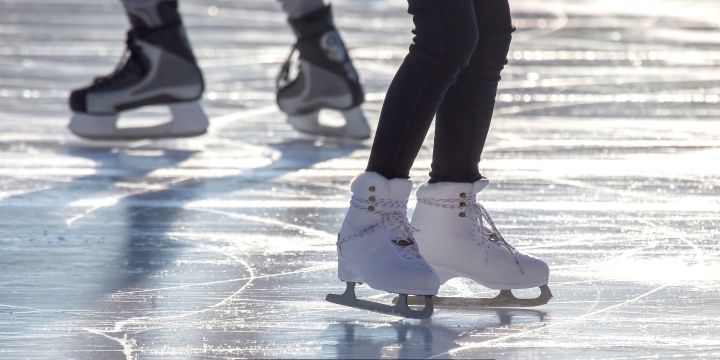Synthetic Ice Rinks: A Modern Solution for Year-Round Skating
Key Takeaways
- Synthetic ice rinks offer accessible, year-round skating—even in warm climates or areas without access to traditional arenas.
- Technological innovations in synthetic ice provide a skating experience increasingly comparable to real ice for athletes and enthusiasts alike.
- These rinks support sustainable alternatives with lower maintenance and energy requirements, making them appealing for communities and organizations large and small.
- Synthetic ice panels allow for versatile installations in homes, schools, parks, and event spaces, easily adapting to various uses and audiences.
- As climate change impacts traditional rinks and training schedules, more communities are investing in synthetic ice.
- Research and real-world experience show that modern synthetic surfaces are effective for skill-building and performance training for all ages.
The Rise of Synthetic Ice Rinks
In the past, ice skating was mostly limited to colder months or regions fortunate enough to host a local rink with refrigeration infrastructure. For aspiring athletes and passionate skaters, the off-season meant skills would stagnate, as consistent practice opportunities were out of reach. But today, synthetic ice rinks are rewriting the calendar for skating activities. In recent years, there has been a marked rise in demand for flexible skating venues, especially as the cost and complexity of maintaining traditional rinks continue to rise.
Technological strides have propelled this evolution, making the experience on a commercial synthetic ice rink feel more natural, responsive, and enjoyable than ever before. The panels now closely simulate real ice, providing sufficient glide for leisure and rigorous training. This means that large multi-use arenas, shopping centers, amusement parks, and athletic training facilities can introduce skating as an activity year-round. This flexibility is a game changer for many organizations, drawing in visitors and revenue regardless of season.
Why Synthetic Ice Makes Sense
From city planners to small business owners, more decision-makers seek sustainable, low-maintenance alternatives to ice manufactured by costly refrigeration and water systems. Conventional rinks consume thousands of dollars’ worth of electricity each month, requiring constant monitoring by trained personnel, especially in unpredictable weather. In areas experiencing warmer winters, maintaining a safe, skateable surface is increasingly challenging and expensive. Property managers and community leaders recognize that these financial and environmental costs can be steep, sometimes unsustainable for non-profit or municipal budgets.
Synthetic ice eliminates many of these hurdles. Once installed, panels don’t require electricity or water, significantly reducing operational costs and environmental impact. According to recent news on the effects of changing winters, many communities are rethinking their approach to ice sports, and synthetic options are emerging as the solution. Regardless of climate, any region can now offer public skating, hockey lessons, and figure skating classes without freezing temperatures or energy-intensive machinery.
How Synthetic Ice Works
Modern synthetic ice uses interlocking panels fabricated from ultra-high molecular weight polyethylene. This specialty polymer has been engineered to create as little resistance as possible, so when a skater’s steel blade moves across the surface, it generates a thin film that mimics the lubricating property of real ice. Earlier generations of synthetic surfaces were less forgiving, sometimes frustrating seasoned skaters, but today, the experience is much closer to the natural feel of frozen water. Many users now report a seamless transition between synthetic and natural ice after a modest adjustment period.
This technology also means the rink can fit almost anywhere. The modular design supports rinks of any dimension, from compact personal training spaces in a garage to expansive public installations at parks and schools. Surfaces don’t demand specialized flooring underneath—just a level, sturdy base. The flexibility of installation allows event organizers to quickly set up a rink for festivals, fundraisers, or temporary pop-up attractions, capturing the joy of skating wherever people gather.
Environmental and Accessibility Benefits
Synthetic ice’s ecological footprint is a significant improvement over frozen alternatives. Standard ice rinks release vast amounts of carbon dioxide from refrigeration units and often rely on fresh water supplies for regular flooding and resurfacing. By contrast, synthetic panels use no water, have no emissions, and require minimal maintenance supplies. Many manufacturers build their products from partially recycled materials, reducing environmental harm.
Accessibility is just as important as sustainability. Expanding the reach of skating into warm-weather areas or providing a rink for communities lacking public recreation funding creates new opportunities for youth and adults alike. Even people with limited mobility or experience can enjoy synthetic skating, as the surfaces are easily adapted for use with skating aids or adaptive equipment. Pop-up skating events, school gym installations, and senior center programs are all made possible thanks to synthetic versatility.
Versatility for Athletes and Communities
A key advantage of synthetic ice is that it meets the diverse needs of skaters of different levels. For children taking their first steps in skates, the surface feels reassuring and stable; for aspiring hockey players or competitive figure skaters, it provides consistent ice time for developing new techniques and muscle memory. Many professional trainers note that practicing on synthetic ice, because of a small amount of extra friction, can benefit fitness, agility, and skill transfer.
Communities have embraced synthetic installations as ways to boost local engagement. During street festivals, winter-themed markets, and school sports programs, synthetic rinks encourage more skating participation, not to mention drawing in visitors who might never have purchased a pair of skates otherwise. The panels can be customized to fit nearly any footprint and are simple to store, meaning a single investment can serve various purposes throughout the year, supporting lessons, leagues, and leisure events.
Installation and Maintenance Basics
While setting up a traditional ice rink requires considerable time and energy, installing a synthetic rink is surprisingly easy. After ensuring the surface below the rink is level and debris-free, panels snap together and are secured. No compressors, refrigerant leaks, or safety hazards are associated with freezing, so smaller spaces, such as patios or gymnasiums, can safely become skating venues. Even a large commercial installation can often be completed in a single day with a small team.
Ongoing upkeep is also straightforward. Owners or event organizers typically sweep, mop, or vacuum the surface to remove dust and grit. Maintenance expenses remain minimal since the panels don’t melt or wear out quickly. The result is a skating surface available to the public almost every day of the year, without the complex machinery, labor, and high costs associated with refrigerated rinks.
Performance Insights and Real-Life Examples
Initial reactions to synthetic ice often include surprise at how natural the surface feels, with only modest adjustment needed for experienced skaters. Research and anecdotal feedback indicate that skaters, including young children and professionals, can effectively perform jumps, spins, or hockey stops. Some coaches encourage training on synthetic ice precisely because it builds extra leg strength and sharpens movement control, helping athletes perform even better when they return to traditional ice settings.
Across North America and beyond, communities report that synthetic rinks increase ice sports and recreation participation. Stories abound of leagues saving their seasons after warm spells threatened to close real-ice rinks, or city parks introducing skating to neighborhoods for the first time. As highlighted in news about creative practice solutions in hockey, the adaptability and reliability of synthetic ice are sustaining interest across age groups and skill levels, even as outdoor conditions become more unpredictable.
Looking Forward: The Future of Skating Accessibility
Every year, advances in materials and manufacturing make synthetic ice more compelling for a wider audience. Facility managers, athletes, and city organizers are discovering that these rinks aren’t just a stop-gap but a sustainable, long-term recreation feature in the twenty-first century. As synthetic rink surfaces continue to evolve, the barrier to entry for aspiring skaters will shrink, and the sport will find new life in unexpected places. Whether for skill development, leisure, or memorable community experiences, the future is bright for skating, which is made possible by synthetic ice solutions.














